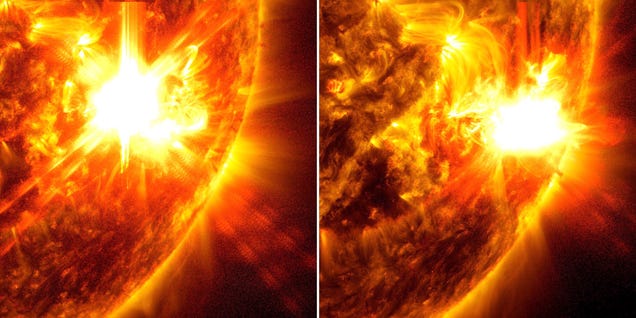Compasses at the bottom of the ocean wobbled as a massive solar storm hit Earth last week, giving the instruments two miles under the sea a jolt of magnetic shock and awe. The compasses are managed by , a national ocean observatory hosted by the University of Victoria. According to Alex Slonimer, a scientific data specialist at the observatory, a daily check in late March—over a month before the recent storm—turned up an anomaly in the reading.
“I looked into whether it was potentially an earthquake, but that didn’t make a lot of sense because the changes in the data were lasting for too long and concurrently at different locations,” Slonimer said in a University of Victoria . “Then, I looked into whether it was a solar flare as the sun has been active recently.” That was the first anomaly, but the real drama only occurred last week, when a significant solar storm arrived on Earth, causing some issues in the American power grid and—perhaps more excitingly—auroras across the globe.

The auroraes were farther flung than normal; in the United States, auroras were spotted as far south as Florida. As seen in the graphic above, compasses across Ocean Networks Canada’s infrastructure wobbled as the geomagnetic storm hit the planet. The data shown above came from two of the network’s observatories off Vancouver Island, VENUS and NEPTUNE, and in Conception Bay on the Atlantic coast.
The most sizeable magnetic shift occurred 82 feet (25 meters) beneath the ocean’.
















